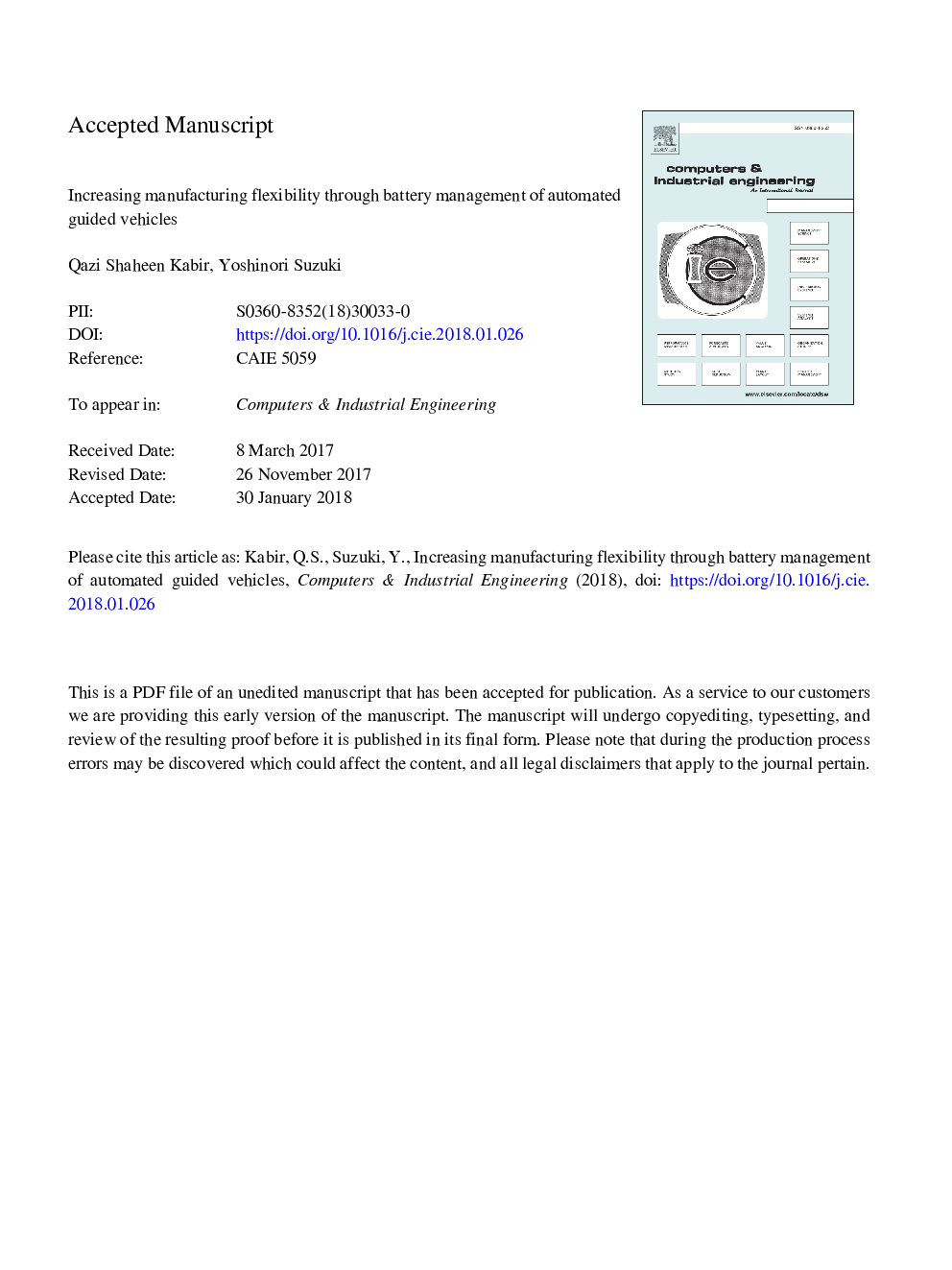| Article ID | Journal | Published Year | Pages | File Type |
|---|---|---|---|---|
| 7541452 | Computers & Industrial Engineering | 2018 | 42 Pages |
Abstract
Purpose of this paper is to explore the possibility of increasing manufacturing capacities in the short run through battery management of automated guided vehicles (AGVs). The paper investigates how the duration of battery charging for AGVs can be varied to increase flexibility of a manufacturing system. The key concept is that a lead acid battery, the most widely used battery type for AGVs, receives most of its charge during the initial phase (time) of charging as opposed to the later phase. Consequently, more productive hours can be obtained from the AGVs by reducing the duration of each charging occurrence (i.e., by recharging the batteries to less than full capacity). In this approach, an AGV needs to be recharged more frequently, but the total productive hours available from the AGVs can increase. Simulation models were developed to investigate the effect of this approach. Results show that productivity of a manufacturing system increases significantly through this approach. This approach can be quite helpful for a firm if AGVs are the bottleneck in its manufacturing plant and the firm needs to have a significant improvement of its productivity in the short-run. Also, this approach does not require a firm to make a large investment to add more AGVs to its facility.
Keywords
Related Topics
Physical Sciences and Engineering
Engineering
Industrial and Manufacturing Engineering
Authors
Qazi Shaheen Kabir, Yoshinori Suzuki,
